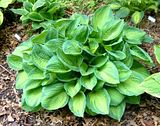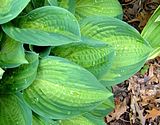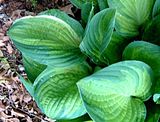Of course, as I think about the description, I have to admit that it comes too close for comfort in our current political atmosphere. Perhaps the greatest tool to either create or prevent such a future is the internet. I think China's efforts to control the internet and email are proving that the genie may be too far out of the bottle to be contained. The surveillance half of the equation works - they really can monitor every thing we do and say and some of what we think - but the propaganda half, while still available for mass manipulation, will always have flaws due to the rogue nature of instantaneous communication.
What a wonder it is, living in the information age!
It wasn’t all that long ago that most people were benighted, lost in myth and superstition. Formal education was a luxury reserved for the privileged. People got their information, knowledge, and wisdom from those around them. It was easy for an untruth – like the idea that cats smother babies in cribs – to become “common knowledge.” Often what passed for “common sense” was neither.
The snowball of technology changed all of that. Guttenberg provided individuals with the opportunity to read the Bible for themselves, thereby allowing them to confuse themselves rather than depending on the confused interpretations of others. Galileo’s discoveries were repressed in Italy, but were published in other locations, spreading the Gospel of the heliocentric cosmos. The telegraph, the telephone, radio, television… they all allowed for even more rapid dissemination of information.
Now we have the internet, which provides almost instantaneous access to an imponderable amount of information.
Of course, as the spread of facts, information, and truth was limited in its spread by limitations on communication, so was rumor, disinformation, and falsehood. While educated people in, say, 1500 C.E., knew that flies develop by spontaneous generation on the surface of food, simple uneducated farm women knew that they should toss a cover over their meat pie to keep the bugs off.
But now we have the internet, which provides almost instantaneous access to an imponderable amount of information – much of it wrong. In previous eras, we were limited to the nonsense provided by those around us and the products of our own limited imaginations. Now we have access to the errors, stupidities, and willfull falsehoods of the entire human race!
If you have never looked at it, I’d encourage you to check out
snopes.com
It is a website dedicated to tracking down the truth or falsehood of many of the messages shooting around the worldwideweb. I usually use it to check on things I receive from friends, family, and acquaintances – messages apparently intended to outrage or entertain, but often containing false information that furthers a particular world view or agenda. Snopes can also provide endless hours of fascinating browsing – like a library of the unlikely, improbable, disturbing, playful and malicious. A great read!
On the other hand, some false information is not malicious… it is just wrong. A case in point… I was looking up a hosta…
Yes, this is a post about a hosta…
Back some years ago I got something like 250 new hosta varieties in one year. It was an unplanned bonanza, which means I often didn’t know very much about the plants and I just sort of plunked them in to a series of new beds I developed. Often I would just do a quick google, get a size estimate and simple description, then go out and pick a place. One of those was an old variety, H. ‘Julie Morss.’ I knew nothing about it.
Over the years, JM has grown… and it has grown on me. It’s placement along a path in a warm location means it is one of the first hostas to get my attention and to get a quick portrait taken. After I chose it for my NPOTD, I did some research to flesh out what I could say about JM. Here’s what I learned…
Dave’s Garden Site had only one photo… a smallish, all-green hosta.
Thinking it was a British name, I checked the BBC gardening page and learned that it is 30 cm (12”) tall and 50 cm (20”) in diameter and the description is: “'Julie Morss' is a medium-sized hosta with pale yellow, heart-shaped leaves with glaucous blue edges…” Of course, the picture that accompanies the article doesn’t match the description - it shows yellow centered leaves surrounded by chartreusey margins.
Next, I found a nursery site with information that come closer to matching my experience: “Hosta 'Julie Morss' gold fading to pale green centred [sic] leaves with a grey green margin. Lavender flowers. Large mound size at maturity.” The accompanying photo, which looks to be over-photoshopped, is a dramatically pure white centered leaf with intensely blue margins and bright green highlights in the overlapping areas - not like any Julie Morss I’ve ever seen.
Next came a web-based hosta database that confidently told me
”Originated in England, seedling of 'Frances Williams'. Leaf center light gold in spring with chartreuse and green margins. 12" high. Color holds in shade. White flowers. Few know this handsome plant.
Interesting… a variegated seedling from a stable parent plant – quite the unusual occurrence. And it is only 12” tall. And… oh yeah… the plant doesn’t look anything like a sieboldiana…
Then there was another hosta photo site… only one picture of JM, a youngish division showing mostly juvenile foliage, and labeled clearly Juliet Morss.
Enough of this Google madness! I’m going to a reliable source – The Hosta Library! They told me:
'Julie Morss' named after an early British hosta pioneer in 1983, this hosta is a hybrid from 'Frances Williams'. It can reach a size of 18" wide x 12" tall. The leaves display a light gold and chartreuse center with blue-green margins, later in the summer becoming all green. They are cordate and rugose. The 18" bare, straight scapes are embellished with whitish-lavender, bell-shaped fertile flowers.
Sounded pretty authoritative. Unfortunately, the size is totally wrong and there is still that lingering doubt about the 'Frances Williams' heritage.
I finally hit the Wade Gardens page and found a description of the hosta I know as 'Julie Morss':
Foliage Mound: 44" wide x 21" tall.
Leaves: Yellow (lutescent) Leaves with blue-green margins are cordate and rugose, 9" long x 6" wide, 9-10 pair of veins. Center of leaf is all green by mid-summer, glaucous on underside of Leaves.
Flowers: Medium, bell-shaped Flowers are whitish-lavender and fertile blooming in late July into August.
Bloom Scape: 18" tall, bare and straight.
Parentage: A H. 'Fortunei' derivative, not from H. 'Frances Williams'.
Comments: Light gold centers and green border forms an attractive clump.
Turning away from the worldwidewrong for my final research, I checked out Zillis. He says:
“ ‘Julie Morse’: {1983r, J. Morss; H. sieboldiana ‘Frances Williams’ sdlg} 21” by 44” md of foliage; lvs 9” by 6” (9-10 vp), chartreuse-centered, green mgd in spring, all-green by mid-summer… actually a Fortunei, not a Sieboldiana.”
So there you go – we have it on multiple authorities that H. ‘Julie Morss’ is a hosta. From there, the descriptions diverge. It is either small, medium, or large. It is either green, or yellow-centered with blue or green margins, or chartreuse-and-green… and it is viridescent - or it isn’t. And it is a Frances Williams seedling, or it isn’t and is somehow actually a Fortunei.
Never in history has it been possible to be so misinformed and so confused with so little effort!
By the way, my JM is 20” x 48”, is yellow-centered with green margins in the spring, becomes more of a green-on-green variegation later in summer – and sure as heck looks and acts like a Fortunei, and has virtually nothing in common with 'Frances Williams' or any of the sieboldianas. I like it a lot, though I planted it with the “medium” size notation and it has eaten much of the pathway and the plants around it…
Hosta Registry - http://www.hostaregistrar.org/detail.ph ... ie%20Morss
MyHostas - http://myhostas.be/db/hostas/Julie+Morss
Hosta Library - http://www.hostalibrary.org/j/juliem.html



